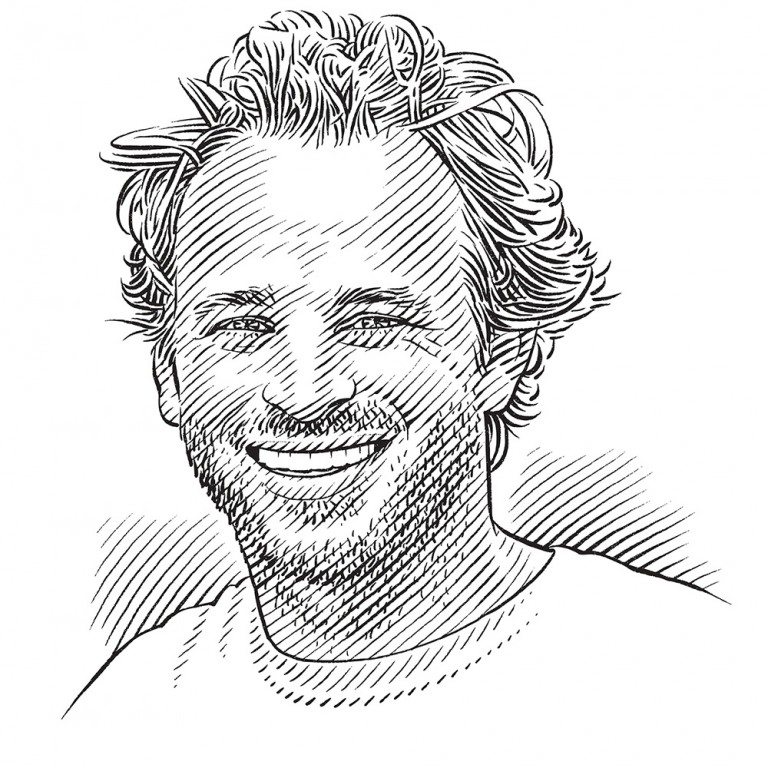Will you stay, or will you go
The great hammerhead shark plays a key role in maintaining healthy ocean systems in the tropics, but overfishing has sent its populations into free fall. Understanding how these sharks move between The Bahamas and the USA could be essential for their conservation. Lauren De Vos discusses a publication by Tristan Guttridge that provides the first evidence that great hammerheads travel huge distances but repeatedly return to specific sites and may stay there for months at a time.
Nomads are nothing new to the islands of Bimini. For adventurous souls with a taste for the outdoors, the islands in this archipelago have been a favourite escape into a quiet corner of The Bahamas that keeps its ‘authentic Caribbean flavour’. Novelists with a restless spirit, bohemian musicians and the philosophically inclined have all crossed the powerful Gulf Stream that separates the mainland coast of the USA from the westernmost islands of The Bahamas. The manifold charms of Bimini prove an irresistible lure to such visitors, some of whom return time and time again. From Ernest Hemingway, who famously penned The Old Man and the Sea here, to Martin Luther King Jr, who retreated to ruminate on his Nobel Prize acceptance speech, and guitar-toting Jimmy Buffett, who wrote Tales from Margaritaville on South Bimini in the 1980s, some of the region’s most famous guests might only have visited once, but those who were hooked loved to return.
As the hurricane season fades and the trade winds keep temperatures balmy, a shark called Gaia makes her way into these familiar waters. Secretive in her ocean home, she travels long distances over a vast sea. Although she is one of the islands’ repeat visitors, she has proved far harder to track than her terrestrial counterparts.
Bimini’s magnetic allure may persuade some iconic landdwellers to keep returning to these mangrove-edged islands, but it is the whereabouts of its ocean inhabitants that have scientists really scratching their heads. The comings and goings of the region’s marine creatures are the subject not of novels but of scientific studies that are probing their lives and behaviours and unveiling their mysteries. Perhaps akin to the spirit of Hemingway’s storytelling, biologists are now writing the biographies of the wilder citizens of Bimini’s waters. Unlike the margarita-sipping, marlin-fishing brigade, Gaia returns annually in winter. Finding out what lures her back each year and exactly where she goes when she leaves will enable scientists to better manage her species’ dwindling populations.
The movement patterns of Gaia and great hammerhead sharks Sphyrna mokarran like her is the subject of a publication by Tristan Guttridge and his co-authors in Frontiers in Marine Science. Tristan was the lab director and senior scientist at the Bimini Biological Field Station at the time that this research was conducted, and if you know anything about his passion for sharks, you’ll understand why he asks the kind of research questions that can uncover important findings to better inform the conservation of these elasmobranchs.
Tristan is equal parts zeal and concern as he explains the need for this kind of research. ‘We’ve never really known much about these sharks,’ he says. ‘There is still so much to learn. We’re just scratching the surface with these first insights.’ For him and his colleagues, the overarching question is ‘how do we best manage and protect great hammerhead sharks?’ Answering it takes time, patience and continual probing into where, when and why these sharks travel. Tristan’s article asks two questions. Firstly, do great hammerheads stay for prolonged periods in, or reliably return to, the coastal regions of The Bahamas and the USA? In other words, do they show site fidelity to these locations? And secondly, how much do they move between The Bahamas and the USA and how far do they travel?
Bimini Biological Field Station (BBFS)
Samuel, better known as Doc, has been studying sharks for 50 years. He discovered how sharks see and even gave us insights into how they think. He founded the Bimini Biological Field Station in 1990, and has been training and inspiring young shark researchers ever since.

